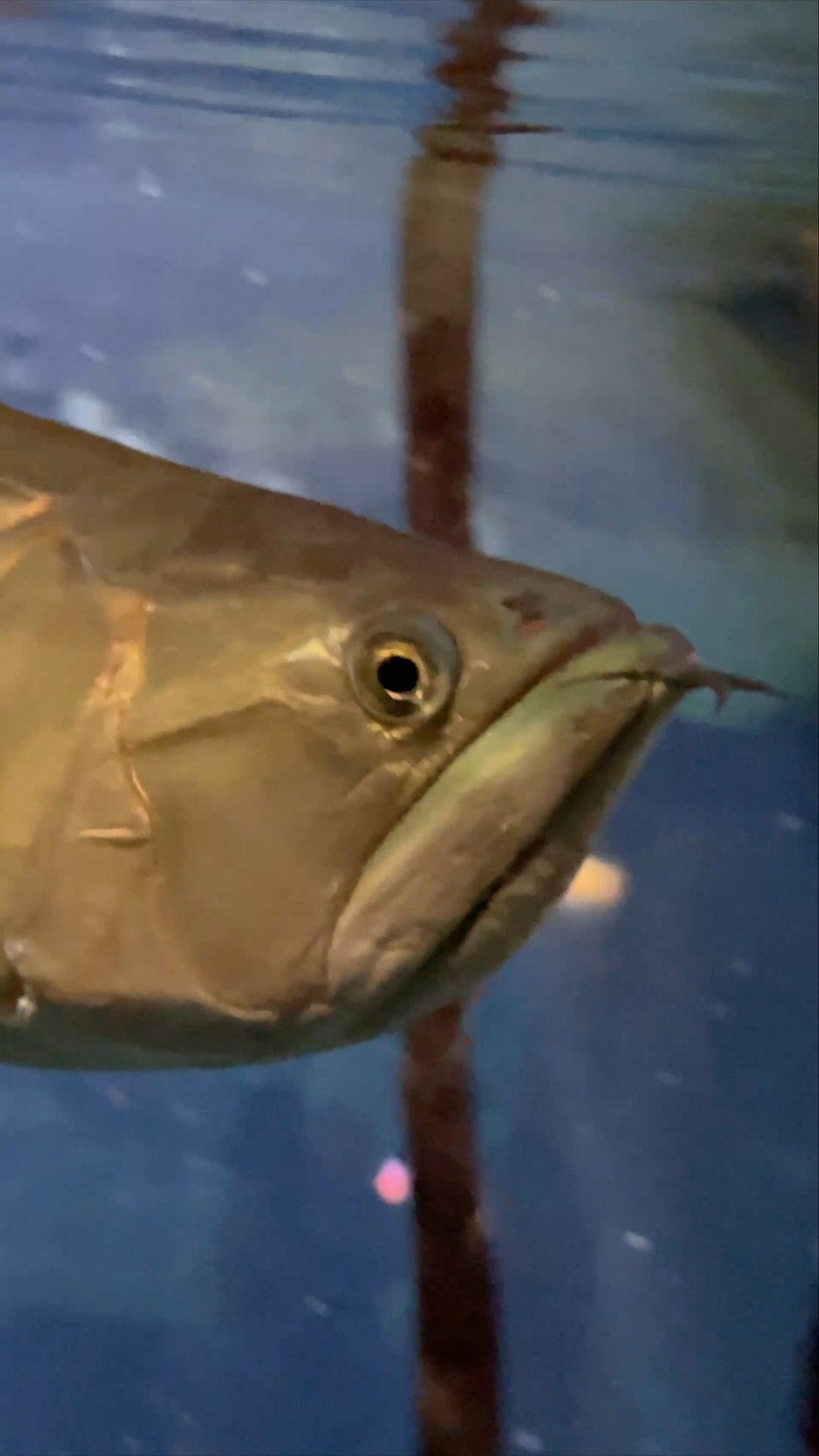- Importance of scanning the entire water column in aquariums for a holistic viewing experience.
- Characteristics and habitat of the Silver Arowana, focusing on its ecological role and behavior.
- Design and management of aquarium exhibits, using the Flooded Amazon as a case study.
- Role of aquariums in conservation, education, and public engagement.
- Techniques and strategies employed by aquariums to replicate natural habitats.
Aquarium enthusiasts and casual visitors alike may often miss key elements present within an aquatic exhibit simply because they overlook valuable perspectives. The act of thoroughly scanning the expansive water column is essential for a comprehensive understanding and appreciation of an aquatic habitat’s biodiversity. This approach enriches visitor experience by revealing secretive species or behaviors that happen at different water depths, enhancing educational and observational benefits.
Take the Flooded Amazon exhibit as an illustrative example. This exhibit is more than a visual spectacle—it embodies the intricate dynamics of a rainforest ecosystem under water. By slowing down and observing with intent, one can discern the subtle yet significant life forms that inhabit these waters, like the Silver Arowana. This barbel-faced fish exemplifies the hidden wonders waiting to be discovered by those who look beyond the immediate.
The Silver Arowana, a majestic inhabitant of the Amazon basin, is a captivating focal point within this display. Known for its striking appearance and surface-skimming feeding behavior, Arowana seem to glide effortlessly just beneath the water’s surface. Scientifically termed Osteoglossum bicirrhosum, these fish play a pivotal role in their habitats, influencing both the ecological balance and the biodiversity of their environment. They are surface-oriented predators, feasting on insects, birds, and even small animals above water. Such behavior adds layers to the narrative of their existence, illustrating the intricate links in the trophic web.
Understanding the natural environment of species like the Silver Arowana demands aquariums to be meticulous in emulating their native habitats. The Flooded Amazon exhibit, for instance, replicates the seasonal flooding patterns that characterize many South American water systems. Every detail, from water clarity and temperature to vegetation and other aquatic life forms, is critically planned to reflect the ecosystem as closely as possible. This dedication supports the physical and psychological well-being of the species and presents a more authentic experience for the observer.
Designing such exhibits requires a profound understanding of the life cycles, feeding patterns, and social structures of the included species. For the Silver Arowana, this involves providing ample surface space for free movement and utilizing feeding strategies that mimic their natural hunting tactics. Aquariums employ various strategies to ensure the maintenance of complex ecosystems within glass walls. This includes employing biologically diverse tank mates that mirror the interactions seen in the wild, thus securing a balanced environment.
The benefits offered by aquariums extend beyond entertainment. They serve a critical function in global conservation efforts and education. Through carefully constructed displays and educational programming, aquariums foster awareness of aquatic ecosystems’ fragility and importance. They engage in breeding programs to safeguard endangered species and act as custodians of aquatic genetic diversity. By showcasing species like the Silver Arowana, aquariums can draw attention to threats faced in the wild, such as habitat destruction and climate change, thereby playing an instrumental role in advocacy and conservation initiatives.
Moreover, aquariums are tasked with the responsibility of increasing public understanding of environmental stewardship. They not only present ecosystems but also interpret ecological interactions and highlight conservation issues important to the survival of species. Interactive and immersive experiences are designed to captivate audiences and instill a deeper understanding and appreciation for biodiversity.
Special exhibitions, like the one featuring the Flooded Amazon and its fascinating inhabitants, can inspire curiosity and action among visitors. They also provide opportunities for research, contributing valuable data to scientific studies, particularly concerning behaviors difficult to monitor in natural settings due to accessibility issues.
Looking broadly at aquarium management, sophisticated monitoring systems are employed to maintain optimal conditions within each exhibit. These systems automate the precise regulation of water parameters such as pH, temperature, salinity, and lighting to replicate natural cycles, ensuring the health and well-being of all marine and freshwater life. Highly trained personnel, including marine biologists and aquarists, are invaluable in this ongoing essential task.
Additionally, aquariums often focus on broader environmental issues like sustainable fisheries and the impact of pollution on aquatic ecosystems. These topics are woven into educational outreach and exhibit narratives, aiding in the creation of conscientious citizens who understand the interconnectivity of global ecology. By emphasizing the need for holistic approaches to environmental management, aquariums help create a more informed and engaged public.
By engaging with the full depth and breadth of what aquariums have to offer, one gains insight not only into the spectacle of aquatic life but also into its scientific realities. Scanning the entire water column symbolizes deeper exploration and understanding, urging visitors to become part of global efforts to sustain and nurture the world’s intricate water systems.
Ultimately, aquariums are not mere collections of fish tanks. They are vibrant centers of learning where science, conservation, and public engagement intersect. They offer an invaluable exploration of life below water, encouraging us all to look deeper and appreciate the complexity of life found within submerged worlds, just as observing the entire water column during a visit reveals the fascinating Silver Arowana—and much more.
*****
Source Description
It really pays to scan the entire water column when you’re exploring the Aquarium. The only way to appreciate one of the hidden gems in the Flooded Amazon exhibit, for example, is to slow down and crane your neck to look at the surface. There, you’ll spy the graceful, barbel-faced Silver Arowana, one of our lead system operator’s favorite fish!


